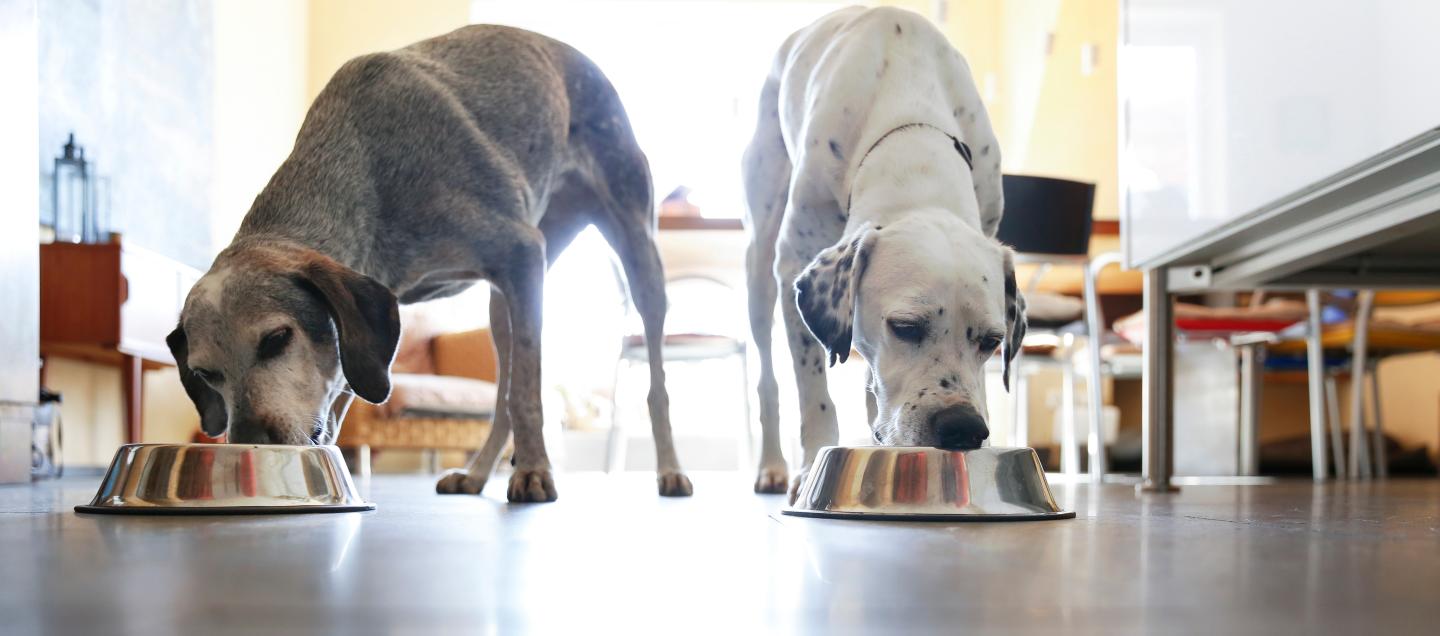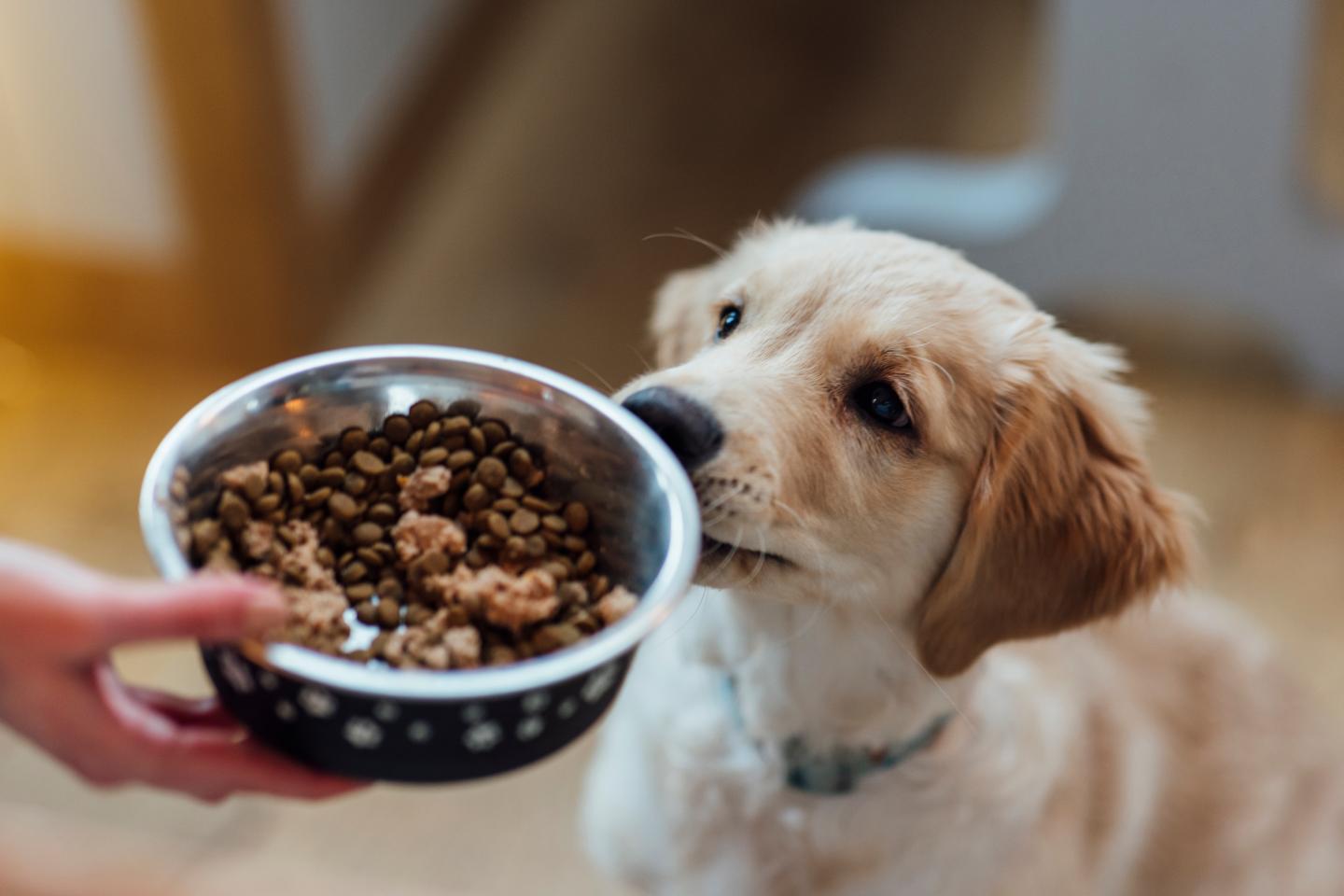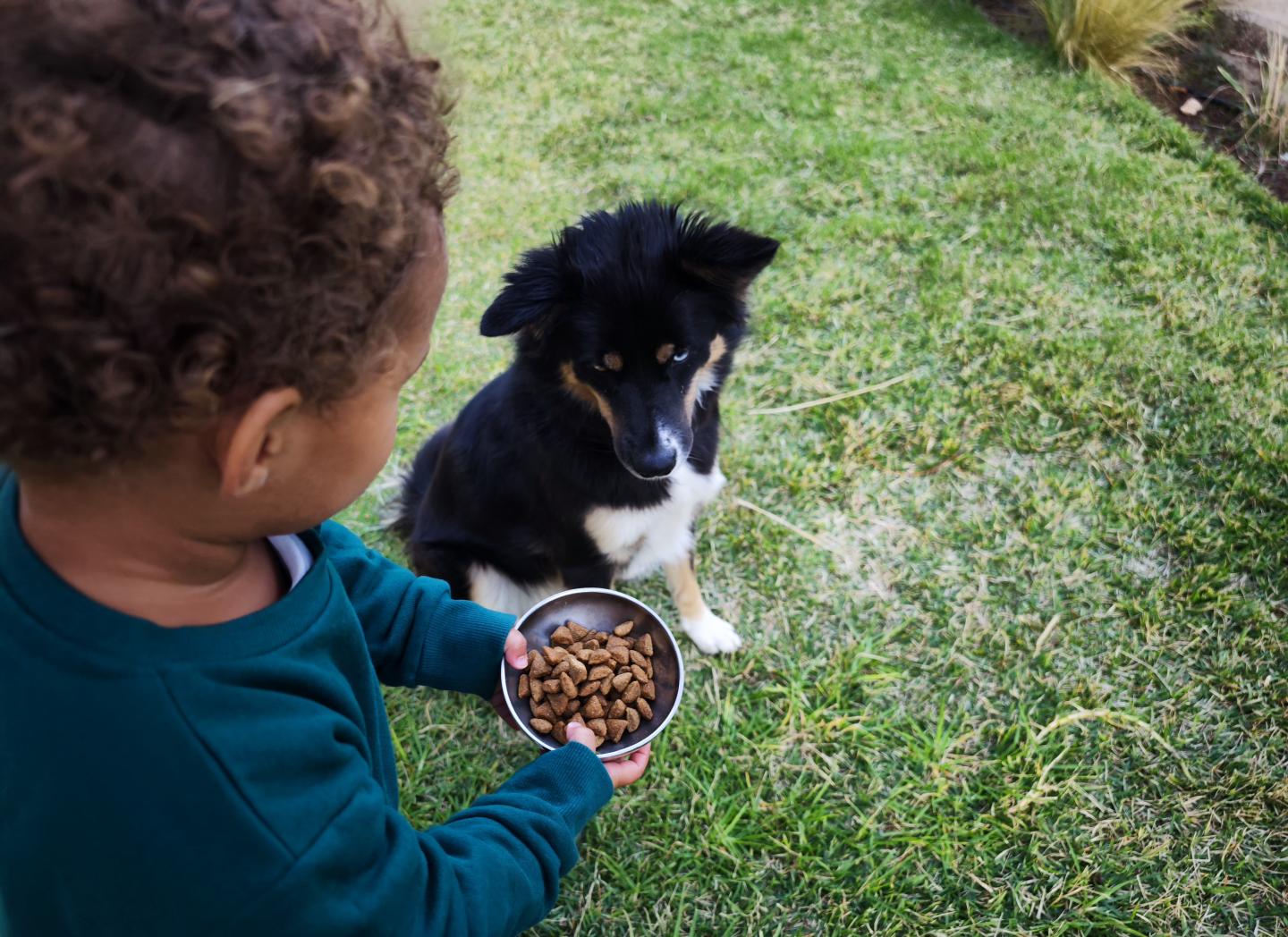
5 healthy, climate-friendly ways to feed your dog
During this summer’s extreme heat, some paws got burned on scorching streets and sidewalks. If these dog days have got you down (and the thought of getting your pooch into protective booties makes your mind spin), here’s some good news: You can enlist Fido in the fight against climate change.
The key is in what you feed your pet.

That’s because meat is a significant contributor to global warming, both in the U.S. and worldwide. Dogs and cats together are responsible for about 30% of U.S. meat consumption, according to a 2017 study that tracked the combined environmental impacts of dog and cat food.
“It’s about the same impact of driving 13.6 million cars,” says UCLA professor Gregory Okin, author of the study.
What’s a climate-conscious dog owner to do? Lots, actually.
Cut out the premium dog food
Pound for pound, meat — especially red meat — causes a lot of climate pollution. Globally, livestock production accounts for 14.5% of greenhouse gases, according to the United Nations’ Food and Agriculture Organization.
Nevertheless, many dog-food marketers are still trying to sell owners on the idea that their canines should eat nothing but meat.
“Your dog doesn't need an all-meat diet,” says Dr. Cailin Heinze, a veterinarian and board certified veterinary nutritionist. “It’s not a wolf.”

In fact, in the 10,000-15,000 years since dogs split away from their wild brethren and learned to walk, work and snuggle beside us, they have evolved to eat (with a few notable exceptions) pretty much what people eat. That includes grains, many fruits and vegetables, animal proteins, legumes, even ice cream on their birthdays.
Truth is, dogs need to get only about 20% of their calories from protein.
Mass market dog foods contain just the right amount of animal protein, are healthy and have less impact on the climate. They make use of unpopular but nutritious kinds of meat — lungs, kidneys, livers, trimmings — that might otherwise go to waste.
“Feed your pet supermarket brands,” says Okin. “This is one of those cases where you can be easier on the planet and easier on your pocketbook at the same time.”
Don’t overfeed your pooch
According to the Association for Pet Obesity Prevention, 59% of dogs in the U.S. are obese or overweight. This is not generally because they are swiping cookies off of kitchen counters (though this has been known to happen.) It’s because their people are feeding them too much.
Overweight and obese dogs are at increased risk for a host of illnesses and for premature death. Feeding them less isn’t just good for the planet — producing less food, after all, means producing less climate pollution — it’s good for dogs’ health and happiness, too.
Downshift from beef-based foods

According to a 2014 study, beef has about five times the climate impact of chicken. Pork and eggs have a significantly lower climate impact, too. So when shopping for dog food or making your own, opt for something other than red meat.
Likewise, dogs don’t need premium cuts of meat or the types of meat marketed to people in the U.S. “Some of these proteins that are trendy in dog food right now, like lamb and venison — there’s no reason for them,” Heinze says.
Consider alternative diets
One of the hot topics these days in dog nutrition is insect-based foods. (Remember: In many parts of the world, people eat bugs.)
Insects like black soldier fly larvae and crickets are finding their way into an increasing number of feeding options, both wet and dry. (The Association of American Feed Control Officials, which provides guidance to state officials on pet food ingredients, has approved foods that include black soldier fly larvae; cricket-based foods are under review.)
“Insects are very efficient at turning plant biomass into animal biomass,” Okin says. Translation: Animals, like cattle and chicken, that eat grasses and grain become protein-filled food themselves. So do bugs. Only bugs are way more efficient. And they can live off of food waste that might otherwise end up in landfills, where it would produce the dangerous greenhouse gas methane.
Heinze, the dog nutrition expert, is excited about insect-based foods.
"The nutritional data looks pretty good,” she says. Still, she’s waiting for more long-term studies before feeding anything more than bug-based treats to her 4-year-old black Labrador, Lucy. “I want to keep her on what we have the science behind.”
Other people have shifted their dogs to vegetarian and vegan diets, which generally produce less climate pollution than diets that include meat. “Vets are not a monolith on this,” says Okin. “Some will work with dog owners to feed dogs a vegetarian diet. Some consider this dog abuse.”
Heinze, herself mostly a vegetarian, says that soy has been used in dog food for dogs with health issues and in regular, maintenance diets for a long time.
"It seems safe and effective and a good-quality protein source,” she says. She notes there’s not a lot of data on the long-term health and safety of other kinds of vegetarian diets for dogs.
Treats as landfill prevention
Most vets advise against mixing up a dog’s diet too much because it can lead to stomach problems. But feeding dogs some leftovers or other food you’re not going to eat is a good way to prevent that food from ending up in landfills.
Heinze feeds Lucy these kinds of extras. “Sometimes, slugs will eat parts of some strawberries in my garden,” she explains. Rather than tossing them in the trash, she passes them along to her pooch. Lucy gobbles them right up.


